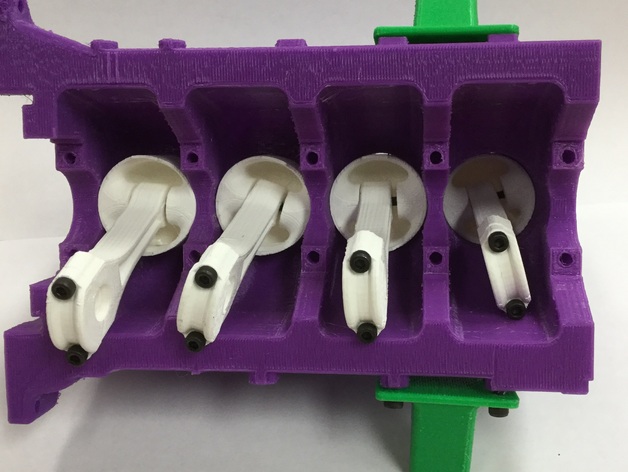
3D Printed Engine in the Classroom
thingiverse
Students utilize 3D printed models as a substitute for more expensive and hazardous components in auto shop classes. Print Settings Printer Brand: MakerBot Printer: MakerBot Replicator (5th Generation) Rafts: Yes Supports: Yes Notes: I adhered to the recommendations from the original page, where there are assembly drawings and parts lists, How I Designed This I discovered this on Thingiverse at the request of an auto shop teacher seeking a way to incorporate a special needs student into his auto shop class. Overview and Background We have students in an auto class who struggle working on actual cars. This model is an excellent tool for students to work on without the risk of damaging valuable equipment. This project arose from an actual classroom situation where a student with special needs was unable to pass the safety test to enter the shop. He was able to work on this model, which is why there isn't yet a picture of the completed item. The entire time he worked on it, he identified the parts, their functions, and how they were supposed to fit together. Objectives To provide students with hands-on experience in auto shop that they may not be able to obtain otherwise. Audience Grades 9-12 Subjects Auto Science Skills Learned (Standards) Students comprehend small and compact engines: Understand engine theory for both two- and four-stroke cycle engines. Know different types of small engines and their applications. Know small engine parts and explain the various systems (e.g., fuel, ignition, compression, cooling, lubrication systems). Know how to troubleshoot and solve problems with small engines. Know how to disassemble, inspect, adjust, and reassemble a small engine. Lesson Plan and Activity This engine can be assembled by the instructor for demonstration purposes or used by the student as a project. In our case, we gave the student the parts (color-coded) with the assembly drawing, and he sorted the parts according to the drawings. While waiting for special-order screws to arrive, he attached the parts with string (see drawing). He then began assembling the engine but ran out of time at the end of the summer and couldn't complete it. I recommend having all required parts before assembly begins. This required close supervision by another teacher to ensure that directions were followed. Duration of Lesson Assembling the engine could take two weeks of class time (our student volunteer wasn't able to finish in that timeframe, so duration would vary based on student ability). Preparation Printing this engine demands a substantial commitment of time and resources. If this is part of a lesson, it's best to start a semester ahead to get it printed. If multiple engines are required, allow even more time. After printing, there's a parts list of fasteners and bearings that will also need to be purchased. The small metric screws were difficult to obtain and had to be special ordered. References http://www.clackamascareers.com/media/uploads/LITINCTELessonPlan-Automotive-EngineDesign.pdf
With this file you will be able to print 3D Printed Engine in the Classroom with your 3D printer. Click on the button and save the file on your computer to work, edit or customize your design. You can also find more 3D designs for printers on 3D Printed Engine in the Classroom.
